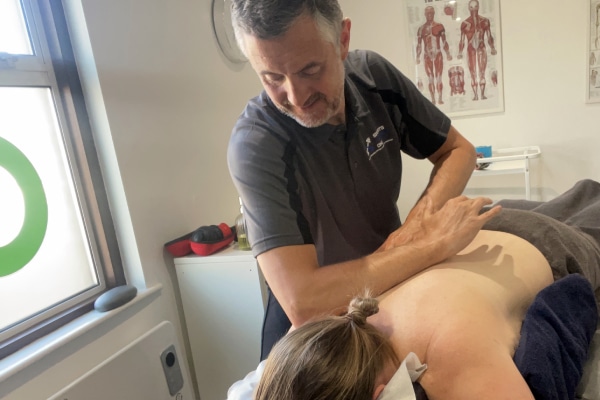The “crack” or “popping” sound during a chiropractic adjustment is primarily caused by a process called cavitation within your joints.
What is joint cavitation?
• Your joints, including those in your neck, are surrounded by a capsule filled with synovial fluid. This fluid helps lubricate the joint and reduce friction.
• When a chiropractor applies a controlled force to adjust the joint, they stretch the joint capsule.
• This rapid stretch decreases pressure within the capsule, allowing gases (mostly nitrogen, oxygen, and carbon dioxide) dissolved in the synovial fluid to form bubbles.
• The release of these gas bubbles creates the “crack” or “pop” sound.
But I’m out of alignment and being realigned right?
The sound is not caused by bones grinding or being ‘realigned’. Instead, it’s simply a change in pressure and the release of gas within the joint.
Why some say it feels good:
This procedure can temporally improve joint mobility, reduce tension and stimulate nerve endings. The downside to chiropractic manipulation being performed in isolation is that the joint will return to its normal state, unless stimulated with an optimally loaded exercise plan.
What does the evidence say?
The truth is if you are expecting a silver bullet treatment by being racked and cracked with no additional exercise, mobility or lifestyle advice, chances are you will end up going around the same continual cycle. Ernst, E., & Canter, P. H. (2006). A systematic review of systematic reviews of spinal manipulation. Journal of the Royal Society of Medicine, 99(4), 192–196. concluded no convincing evidence from systematic reviews to suggest that Spinal Manipulation is a recommendable treatment option for any medical condition.
Rubinstein, S.M. et al. (2019) ‘Benefits and harms of spinal manipulative therapy for the treatment of chronic low back pain: Systematic review and meta-analysis of Randomised Controlled Trials’, BMJ, p. l689. concluded that spinal manipulation Therapies produces similar effects to recommended therapies for chronic low back pain, whereas SMT seems to be better than non-recommended interventions for improvement in function in the short term. Clinicians should inform their patients of the potential risks of adverse events associated with SMT. Again, further reinforcing the evidence of short-term temporary relief response.
Where is the strongest evidence for MSK injury rehabilitation
The strongest evidence lies quite simply with Exercise Therapy. This involves structured physical activities aimed at restoring normal musculoskeletal function, improving physical performance mobility and preventing recurrence of symptoms. It is one of the most evidence-supported interventions in rehabilitation and the internet it littered with many peer reviewed journals supporting the case. Organisations like the National Institute for Health and Care Excellence (NICE) and American College of Physicians (ACP) strongly recommend exercise as a first-line treatment. This isn’t to say spinal manipulation doesn’t have a place in MSK healthcare, but should be seen adjunct to the main treatment of getting people loaded and moving in the right way, rather than being seen as the primary treatment.
For a great paper on tissue repair using the process of Mechanotherapy, please take a look at Khan, K.M. (2010) ‘Mechanotherapy: How physical therapists’ prescription of exercise promotes tissue repair’, Yearbook of Sports Medicine, 2010, pp. 44–45. doi:10.1016/s0162-0908(09)79586-8.
Therefore, when you book an appointment with Stuart Sahan at Sports Therapy One, you can be assured you will be treated in a holistic way and will always be given advice on targeted exercise, activity modification, tissue healing and onward referral if necessary. To find out more please click here to visit our home page.



